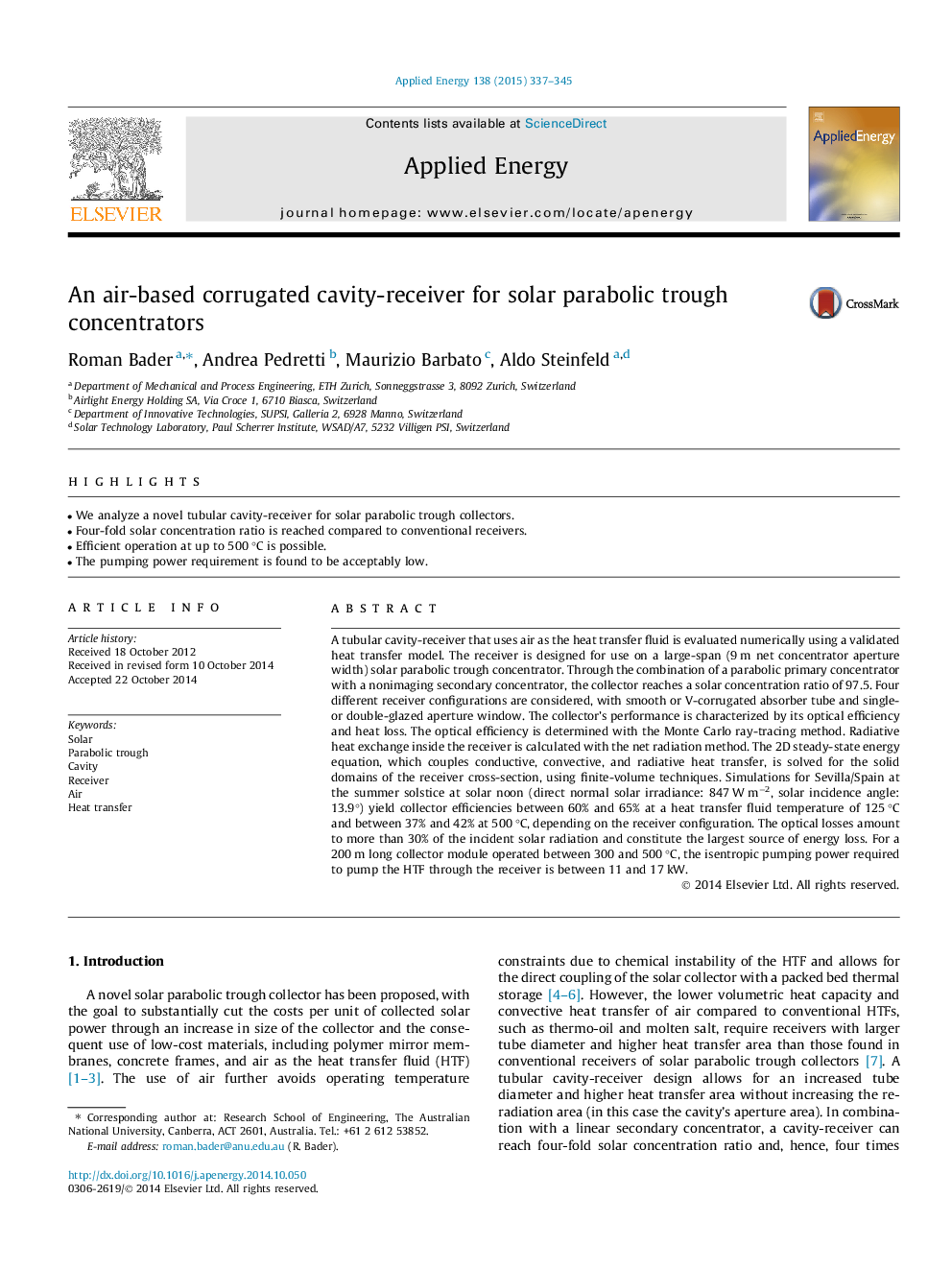| Article ID | Journal | Published Year | Pages | File Type |
|---|---|---|---|---|
| 6688269 | Applied Energy | 2015 | 9 Pages |
Abstract
A tubular cavity-receiver that uses air as the heat transfer fluid is evaluated numerically using a validated heat transfer model. The receiver is designed for use on a large-span (9 m net concentrator aperture width) solar parabolic trough concentrator. Through the combination of a parabolic primary concentrator with a nonimaging secondary concentrator, the collector reaches a solar concentration ratio of 97.5. Four different receiver configurations are considered, with smooth or V-corrugated absorber tube and single- or double-glazed aperture window. The collector's performance is characterized by its optical efficiency and heat loss. The optical efficiency is determined with the Monte Carlo ray-tracing method. Radiative heat exchange inside the receiver is calculated with the net radiation method. The 2D steady-state energy equation, which couples conductive, convective, and radiative heat transfer, is solved for the solid domains of the receiver cross-section, using finite-volume techniques. Simulations for Sevilla/Spain at the summer solstice at solar noon (direct normal solar irradiance: 847 W mâ2, solar incidence angle: 13.9°) yield collector efficiencies between 60% and 65% at a heat transfer fluid temperature of 125 °C and between 37% and 42% at 500 °C, depending on the receiver configuration. The optical losses amount to more than 30% of the incident solar radiation and constitute the largest source of energy loss. For a 200 m long collector module operated between 300 and 500 °C, the isentropic pumping power required to pump the HTF through the receiver is between 11 and 17 kW.
Related Topics
Physical Sciences and Engineering
Energy
Energy Engineering and Power Technology
Authors
Roman Bader, Andrea Pedretti, Maurizio Barbato, Aldo Steinfeld,
